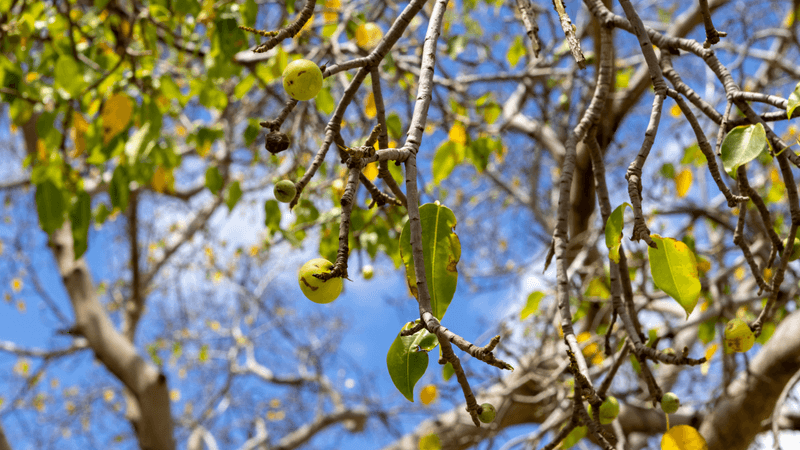If you too suffered through the cinematic experience that was The Happening, you’ll know it’s hard to feel that threatened by a plant – but there is a tree out there that seems hell-bent on cruelty. The manchineel has been declared “the most dangerous tree in the world” by the Guinness Book Of World Records, with bark that can give you chemical burns, sap that makes it unsafe to stand near when it’s raining, and a “death apple” that can kill you if you eat it. Nobody let Eve near this one.
Christopher Columbus referred to the most dangerous tree in the world as the “manzanilla de la Muerte,” meaning little apple of death. It’s more commonly known as beach apple today, but death apple seems a fitting title when you hear what happened to a consultant radiologist who made the mistake of eating one.
“I rashly took a bite from this fruit and found it pleasantly sweet,” wrote Nicola Strickland in an admirably candid 2000 paper. “My friend also partook (at my suggestion). Moments later we noticed a strange peppery feeling in our mouths, which gradually progressed to a burning, tearing sensation and tightness of the throat.”
“The symptoms worsened over a couple of hours until we could barely swallow solid food because of the excruciating pain and the feeling of a huge obstructing pharyngeal lump. Sadly, the pain was exacerbated by most alcoholic beverages, although mildly appeased by pina coladas, but more so by milk alone.”

A regrettable experience, but one that could have been a lot worse as ingestion of manchineel fruit has been linked to low heart rate, swelling in the throat that can be so severe that the affected person may require intubation, gastrointestinal bleeding, and even death. The severe reactions are thought to be caused by phorbol esters in the tree's sap and fruits. Suffice to say, not all apples keep the doctor away.
Even if you’re not so rash as to eat unidentified mystery fruit, the manchineel can hurt you without even making direct contact. A 2011 paper details what happened to a group of students who sheltered from the rain under a manchineel tree on the island of Bequia in the West Indies, only to end up with manchineel dermatitis and ophthalmitis.
A pretty dangerous bit of greenery, then, but what perhaps seems the most dangerous about the death apple of all is the fact that, on the surface of it, it just looks like an ordinary tree. With the gift of hindsight, Strickland sagely remarked that it’s a tree worth raising awareness of as, “Perhaps few adults (especially a medically qualified one) would be foolish enough to try eating an unknown fruit found on a foreign beach, but children would be highly likely to do so, especially when they find it to smell and taste sweet, resembling a ripe plum.”
So, watch out, because if you like piña coladas and getting caught in the rain, the manchineel is going to ruin that for you.





